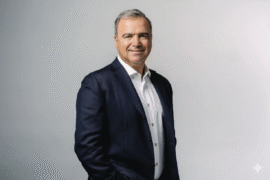This article may contain references to products or services from one or more of our advertisers or partners. We may receive compensation when you click on links to those products or services. Nonetheless, our opinions are our own.
The information presented in this article is accurate to the best of our knowledge at the time of publication. However, information is subject to change, and no guarantees are made about the continued accuracy or completeness of this content after its publication date.
- Main Points
- Introduction
- Project Management Basics
- How to Start a Project Successfully
- Phases of the Project Life Cycle
- Final Thoughts
- Frequently Asked Questions
- What are the common pitfalls in the Project Management stages?
- What are the five stages of Project Management, and what does each stage entail?
- How can I effectively transition from one stage of Project Management to the next?
- What tools or software can assist me in managing my projects through these stages?
- What are some common challenges faced during each stage, and how can they be overcome?
- Recommended Reads
Main Points
- It is important to break the project into clear phases. These phases include starting, planning, doing, checking, and finishing the project, according to the Project Management Institute.
- A strong project management process can lead to success. It helps ensure that goals are achieved within the project timeline.
- There are helpful tools and resources available, such as project management software, communication plans, and work breakdown structures. They can help the project run smoothly and keep everything organized.
- It is important to know the roles of project team members and managers. They drive project deliverables and make sure everything stays aligned with the project goals.
- To prevent issues such as scope creep and poor communication, following best practices is beneficial. This helps keep the project moving smoothly through each phase of its life cycle.
Introduction
Managing a project can feel tough. There are lots of tasks, changes in what clients want, and deadlines to meet. But if you break the project management process into smaller steps, it gets easier. Having clear phases helps the project team stay organized. You can track progress and meet required goals while keeping everything at a high quality. Whether it’s your first project or you want to enhance your workflows for future projects, knowing each phase will help you lead better and reach project success.
Project Management Basics
Project management is more than just keeping track of deadlines. It is about building a way for your team to collaborate and achieve wonderful results. This means breaking a project into simple steps. It helps enhance focus and quality.
The project life cycle gives a clear plan. It helps you and your project team through several stages. These stages are starting, planning, doing, checking, and finishing a project. When you know these steps, you can handle tasks better. You can reduce risks and set realistic goals. This way, you achieve project success every time.
What Is Project Management?
Project management takes ideas and makes them happen. It follows steps to reach goals while staying within set limits. This process includes keeping track of progress, managing resources, and changing plans when needed throughout the project life cycle.
The important part of project management is the project life cycle. It starts with project initiation. In this step, you look at whether the project can work and create a business case. Next is planning. This stage helps you create a clear roadmap that includes project scope, schedule, and objectives. After planning, it’s time for execution. This means you take the project plan and put it into action.
A project needs focus to run well. It is important to watch everything closely to make sure tasks match the project goals. You can track progress by using major performance indicators. Finally, closure happens when you check how well the project did and save records for future projects. A strong project team managing each step will help you achieve successful project delivery.
Value of Structured Project Management
Structured project management is important. It serves as the foundation for every successful project. By dividing work into smaller parts, we can make sure that each part of the project management process is handled well. This organization helps us see clearly and lowers risks.
Using clear steps, like planning, doing, and checking, helps the project life cycle run smoothly. This helps project managers focus on reaching project goals while monitoring progress and fixing any problems that arise. Tools such as work breakdown structures and communication plans make it easier to manage the team effectively.
Setting goals for each phase of a project helps ensure that the project deliverables meet people’s expectations. Keeping an eye on progress can prevent issues like scope creep, budget overruns, and communication gaps from harming the project. With clear goals and solid systems, your next project can run smoothly.
Voted "Best Overall Budgeting App" by Forbes and WSJ
Monarch Money helps you budget, track spending, set goals, and plan your financial future—all in one app.
Get 50% OFF your first year with code MONARCHVIP
How to Start a Project Successfully
Starting a new project can feel hard, but having a good plan helps. First, find the main parts of your project. This means looking at your goals, timeline, and the people who will support you. These basics help keep your project team focused.
Next, ensure you have useful tools for planning and tracking progress. This might be project management software or communication methods. Good tools help the team a lot. When things are clear, you can feel confident as you move ahead in the project life cycle.
Tools and Resources You’ll Need
- Project Management Software: Tools like Monday.com or Asana help you make schedules, track progress, and handle tasks easily.
- Work Breakdown Structures (WBS): These tools show clear views of project deliverables and what the team needs to do.
- Communication Plans: Tools like Slack keep everyone in touch for quicker communication.
- Time Tracking Systems: These are good for managing resources. They let you check hours worked compared to the project timeline.
- Risk Management Tools: Use these to identify risks and create plans to reduce them during the monitoring phase.
Project managers can use these important tools to stay focused on project goals. They can also improve workflows to achieve better results when they carry out their plans.
How to Set Project Objectives
One of the first things to do in project management is to set clear goals. These goals should match the project scope and what it needs to achieve. If the project team does not have clear goals, they can lose their way. This can lead to issues and waste time.
Begin by figuring out the goals of the project during the planning phase. You can use the SMART method. SMART means Specific, Measurable, Achievable, Relevant, and Time-bound. This makes sure the goals are sensible and can be tracked easily. For instance, if you want to offer a software update, be clear about the technical details and set a deadline.
Clear objectives show what success looks like. This removes any confusion when keeping track of progress or completing tasks. These goals help team members feel accountable and stay focused. Regularly updating your objectives through good communication will keep them relevant as the project continues. With clear targets, it’s easier to reach project closure.
Phases of the Project Life Cycle
Every project goes through a plan that has five important steps: starting, planning, doing, checking, and finishing. These phases of the project life cycle help keep tasks in order. They make sure that everyone stays focused on their goals. This is especially true when tasks become complicated.
In project initiation, each step is important to keeping everything on track. This means reviewing all the important figures while managing the project. Each phase gives project managers a broad view as well as the tiny details that need attention. If you need support, here is a simple guide to each important step. This can help ensure your projects are successful every time.
Step 1: Project Initiation
The initiation phase is when you take ideas and make them into real goals. First, you should check if the project can happen. You need to do a feasibility study and put together a business case to explain your goals. This process helps you see if your plan matches the resources and budget you have.
The project charter outlines the main goals, scope, and limits of the project. It also names the major stakeholders. A project manager needs to be selected to manage everything. This project manager will share important updates with the team during meetings.
For example, think about a car company planning to build an electric car. During the initiation phase, they decide to create a new vehicle. However, they do not know the specific features yet. When they go from initiation to planning, the team can develop their ideas better. This early stage helps the team understand their goals and direction.
Step 2: Project Planning
Planning starts with ideas and turns them into a clear project plan. This step is the base for the entire project management plan. In this phase, tasks, timelines, and resources are described in detail. A work breakdown structure (WBS) divides big goals into smaller, more manageable parts. SMART goals set clear objectives.
Making a resource guide can involve setting targets. For example, you might say, “I want to finish and launch by January.” A communication plan helps keep everyone updated about the project’s progress.
Risk management is also very important. Use past data to spot possible issues and create a plan to handle them. It’s a good idea to have a change management plan as well. This will let you adjust to changes without hurting the project. After you clarify vital parts, like project scope and timeline, the planning phase will help you stay on track as you start the project.
Step 3: Project Execution
Execution is when your strategy becomes action. It’s the time when your project plan begins to take shape as you share tasks with team members. In this phase, create workflows that align with your project’s goals. This step is important to keep everything on track. Good teamwork matters a lot now. Tools like project management software can help you track progress as it happens.
As you complete tasks, keep in touch with stakeholders. For instance, talking to your team can help you adjust tasks. This helps everyone understand the goals. In the execution phase, it is important to stay close to monitoring. You should use major performance indicators (KPIs) to track progress.
To prevent issues like scope creep, stick to your roadmap. Watch over tasks and make sure that deliverables fit the project’s scope. Focusing on your work will help you transition to the monitoring phase when needed.
Step 4: Monitoring and Controlling
Project monitoring takes place while the project is active. It makes sure that the goals match up with the original project management plan. To keep everything on track, you should define Critical Success Factors (CSFs) and Key Performance Indicators (KPIs) in the planning phase. These tools help you see how things are going or warn you if something isn’t right.
Managers check how resources are used by looking at costs compared to the approved budget. To keep track of tasks often, software tools like dashboards or Gantt charts can give helpful information. Spotting risks early can greatly improve results, especially in tough projects.
Performance reviews in the monitoring and controlling phases help stop problems, such as scope creep. Scope creep occurs when project boundaries are not clear. Acting quickly helps keep the project on track and prevents delays. Monitoring is important. It shows if the project’s timeline, budget, and deliverables match the original goals. This focus is needed to ensure the project’s success.
Step 5: Project Closure
Wrapping up a project is not just about hitting targets. It also means looking back at the results to make improvements later. During this stage, the project manager gathers lessons learned and organizes documents for easy access in future projects. It is important to finish contracts with temporary team members and complete all necessary paperwork for stakeholders.
Reflection meetings at the end of a project are useful. They help us see what worked and what could be improved. For instance, looking at data from earlier stages can show us patterns in our progress and highlight areas where we can do better.
Make sure all the deliverables match the project goals you agreed on. Keeping your documents organized is very helpful. Holding feedback sessions and saving results on digital platforms makes it easier to review. This prepares your organization for future projects and reduces problems later. When everything is finished, closure is a sign of your success and helps everyone get ready for the next project.
Final Thoughts
Successful project management has several important steps. Each step is necessary to improve project outcomes. When teams apply skills from initiation, planning, execution, monitoring, and closure, they meet project goals more easily. Prioritizing teamwork, clear communication, and good project management tools helps teams track progress and reduce risks. As you plan future projects, using knowledge from the project management life cycle will strengthen your project team. This can lead to lasting success and better performance in all your work.
Frequently Asked Questions
What are the common pitfalls in the Project Management stages?
Common mistakes in project management stages are not planning well, having poor communication among team members, not including stakeholders, ignoring progress monitoring, and not adjusting to changes. Finding these problems early can greatly improve project success and ensure timely delivery. It is helpful to use checklists and review past project data to avoid repeating errors. Proactive communication and setting clear expectations can resolve many of these challenges.
What are the five stages of Project Management, and what does each stage entail?
The five steps of project management are initiation, planning, execution, monitoring, and closure. Each step depends on the one that comes before it. This way helps to align strategies, share resources, complete tasks, track performance, and reach project goals. Each phase provides structure to avoid confusion. Understanding and applying these stages helps ensure smooth project delivery.
How can I effectively transition from one stage of Project Management to the next?
To move easily through different stages in project management, good communication among team members is very important. It’s good to use proper documents and have regular check-ups. Setting clear goals and defining who does what will make it easier to pass tasks along. This helps keep the speed steady and makes sure everyone knows their role as the project goes on. Effective transitions lead to better collaboration and fewer delays.
What tools or software can assist me in managing my projects through these stages?
Many tools can help with project management at all stages. Some popular choices are Trello for managing tasks, Microsoft Project for planning, and Asana for teamwork. These tools make it easier to be efficient, communicate, and track progress. They help to ensure everything runs smoothly during the starting, planning, doing, and checking stages. Using integrated platforms can enhance visibility across the entire team.
What are some common challenges faced during each stage, and how can they be overcome?
Common issues in project management include scope creep, problems with resource allocation, and communication gaps. You can fix these issues by setting clear goals and keeping in touch frequently. It’s important to closely watch how the project is moving along. Making adjustments based on feedback will help keep the project on track and in line with its goals. Encouraging team feedback also supports continuous improvement.

Reviewed and edited by Albert Fang.
See a typo or want to suggest an edit/revision to the content? Use the contact us form to provide feedback.
At FangWallet, we value editorial integrity and open collaboration in curating quality content for readers to enjoy. Much appreciated for the assist.
Did you like our article and find it insightful? We encourage sharing the article link with family and friends to benefit as well - better yet, sharing on social media. Thank you for the support! 🍉
Article Title: How to Manage Projects Effectively
https://fangwallet.com/2025/07/27/how-to-manage-projects-effectively/The FangWallet Promise
FangWallet is an editorially independent resource - founded on breaking down challenging financial concepts for anyone to understand since 2014. While we adhere to editorial integrity, note that this post may contain references to products from our partners.
The FangWallet promise is always to have your best interest in mind and be transparent and honest about the financial picture.
Become an Insider

Subscribe to get a free daily budget planner printable to help get your money on track!
Make passive money the right way. No spam.
Editorial Disclaimer: The editorial content on this page is not provided by any of the companies mentioned. The opinions expressed here are the author's alone.
The content of this website is for informational purposes only and does not represent investment advice, or an offer or solicitation to buy or sell any security, investment, or product. Investors are encouraged to do their own due diligence, and, if necessary, consult professional advising before making any investment decisions. Investing involves a high degree of risk, and financial losses may occur including the potential loss of principal.
Source Citation References:
+ Inspo
There are no additional citations or references to note for this article at this time.












































